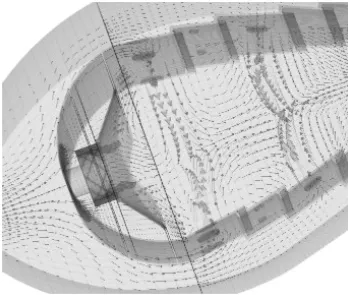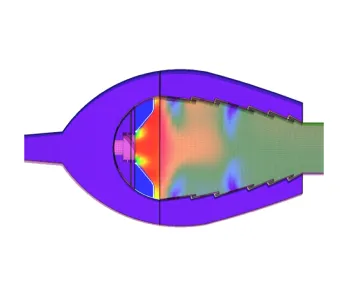Objective: The goal of this project was to perform detailed computational fluid dynamics (CFD) modeling of a model gas turbine combustor to analyze flow patterns, combustion processes, and key performance factors such as velocity profiles, pressure losses, mass flow splits and temperature distribution.
Solution: A comprehensive CFD model was developed, with individual components meshed separately and combined into a unified grid. A dominant hexahedral mesh was used, particularly for critical components such as the swirler and conical flare, ensuring accuracy in areas with complex flow characteristics. The combustion process was modeled using a four-step reaction formula, and the turbulence was simulated using a high Reynolds number k-epsilon model with wall functions.
The computational domain represented a 20-degree sector of the combustor, with periodic boundary conditions applied to the circumferential direction. The model incorporated realistic inlet conditions, including mass flow, velocity, and temperature, and included source transfer for small holes in the flare and dome.
Outcome: The CFD analysis provided valuable insights into the combustor’s performance. Key outputs from the simulations included:
- Velocity profiles at various locations within the combustor
- Mass flow distribution and pressure losses
- Temperature profiles across the combustor
- Radial and circumferential pattern factors
- Pressure recovery coefficients
These results were critical for understanding the combustion efficiency, optimizing the injector designs, and improving the overall performance of the gas turbine combustor. This CFD-based approach significantly enhanced the design process, providing a deeper understanding of flow behavior and combustion processes, ultimately leading to more efficient and reliable gas turbine operations.

Velocity vectors in model Gas Turbine Combustor

Temperature Distribution in model Gas Turbine Combustor